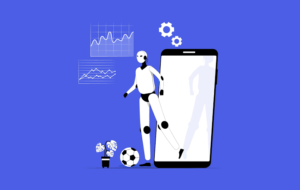CURRENT TRENDS IN SPORTS

Now, more than ever before, the world is rapidly spinning towards advancement and the world of sports seems not to have been left behind. In the face of emerging trends; federations, clubs, sponsors, media, equipment manufacturers, textile companies, and all other major stakeholders in sports must be aware and make informed decisions that would ensure their continued relevance.
A TRANSITION FROM CONVENTIONAL TO NON-CONVENTIONAL SPORTS

The advent of technology coupled with the COVID-19 pandemic has changed the narrative and is as well charting a new course in the world of sports. This and some other factors, like demographic changes and Gen Z preferences, have caused a nuanced shift towards non-conventional sports.
Sports like football, baseball, and hockey have seen steady declines in participation rates. For football, this might not apply globally but in climes like the US, it is experiencing a steady decline. Forbes reported that between 2008-2019, over 620,000 young people between the ages of 6-18 stopped playing tackle football, it also reported that the super bowl suffered a massive loss of over 12.5 million viewers from 2011-2019, dropping to its all-time low since 1976.
![Acceleration in football's decline across four[-] measures, 2010-14 to 2014-18. ROGER PIELKE JR.](https://abhpress.com/wp-content/uploads/2023/03/960x0-300x255.png)
measures, 2010-14 to 2014-18.
ROGER PIELKE JR.
eSports are competitive video games played in a multiplayer style in front of an audience. Professional gamers, called e-athletes play the game. It will be amazing to know that top players live like athletes, as they engage in over 8 hours of practice daily, just like the athletes in conventional sports. There is also a staff of coaches, strategists, and nutritionists!
It is also quite interesting that Gen Z has completely embraced it, as they believe that a sport does not necessarily need to be physical to enjoy it. This has accelerated the speed with which eSports has gained so much traction. Sportstomorrow.com reports that the sport has already garnered more than 495 million viewers, of which almost half are regular viewers. Another fact that is mind-boggling is that revenues have surpassed 1.1 billion US dollars since 2019. It also comes with mouth-watering prize pools, totaling about 30 million US dollars per tournament.
GOING GLOBAL
The jostle for an effective global reach has become a top agenda for major sports management. This was informed by the current trend of globalization that is already sweeping through the world of sports, whether it is the champions league, tennis, golf, or formula One, all has gone global and that means; global audiences, global fans, global media and of course, global leagues.
Sports stakeholders the world over have now been saddled with the urgent task of catching up with this trend and in a bid to achieve this, conscious efforts are being made to carve out a niche for themselves in the global space. This we see with clubs reaching out to acquire new fans abroad, a very good instance of this was an ad I saw on social media about an English premier league club wooing fans with a discount on their shirt sales. The various media outfits are in a frantic search for all the rights they can get. Equally, viewers want to be able to watch sports wherever they might be.
ARTIFICIAL INTELLIGENCE IN SPORTS

The impact of artificial Intelligence in sports and sporting activities is one that is holistic. It is expected to function using a four-pronged model, which borders on; Scouting and recruitment, Training and performance analysis, Maintaining player health and fitness, and Optimising Broadcasting and Advertising.
AI shows promise in the area of providing objective opinions about the potential and talents of players. This is a big game changer in the area of scouting and recruitment, as data and data analytics will become the new gold standard. This means that the scouting process will be heavily backed by carefully analyzed data, which will transcend just goals scored, passes completed, and distance covered, to include metrics and data points such as playing patterns, tactics, and social media engagements among others.
On players’ health, AI will be able to extrapolate necessary and relevant data in such a way that will improve predictive and diagnostic capabilities. This will play out in investigating the clinical condition of players in a far-reaching manner, one that will take into account both the athlete’s mental and emotional condition and not just physical conditions.
AI will also positively impact media and advertising, such as determining the right camera angles, and the best time to show ads during a game based on excitement levels. Journalism will also be impacted, as intelligent machines will be able to auto-generate articles. Performance optimization will also be an effective way for AI to improve training methods. It is also expected to transform stadiums into immersive learning structures, where fans are afforded the benefit of getting players’ statistics right there at their fingertips.
SENSORS AND DATA ANALYTICS

The use of sensors in sports is already becoming popular. It is by these sensors that data is generated and insights derived will find applications in the areas of athlete statistics, health, fans management, venues, media, and wearables. A very good example of this is the production of a shirt with sensors that would guide athletes on the correct posture to assume in golf, tennis, or yoga, or boxing gloves with wearable inertia sensors that would predict possible opponent’s move in boxing or a wrist watch with sensors that would provide a formula One athlete with data points like mileage, possible collision, and road signals.
In the recently concluded World Cup, this technology was deployed by FIFA to decide who to award the opener of the match between Portugal and Uruguay to. To settle this contentious issue, the manufacturer of the match ball, Adidas, was consulted by FIFA and it was revealed that they employed connected Ball Technology housed in Adidas’ Al Rihla Official Match ball. Adidas further explained that with the help of the in-built 500Hz IMU sensor, they were able to rule out any contact on the ball from Cristiano Ronaldo.
The sensors market is reported to have already attained a multi-billion dollar status and is about to become an indispensable sportsman’s companion and such is the case with every other current trend.
